ZEN IRODALOM ZEN LITERATURE
« Zen index
« Home
六牛圖 Liuniu tu [Rokugyūzu]
The Six Oxherding Pictures
by 自得慧暉 Zide Huihui
[Jitoku Keiki], 1090-1159
Translated by 工藤澄子 Kudō Sumiko (1929-)
Illustrations by 柴山全慶 Shibayama
Zenkei (1894-1974)
Zenkei Shibayama: The six oxherding pictures. Translated by Sumiko Kudo; Nissha Printing Co., [Tokyo, 1967], 48 pages
The First Picture:
AWAKENING OF FAITH
VERSE (頌)
One thought of faith is the basis
Which leads one to the way through many a rebirth.
Pitiful indeed am I who know nothing of the Enlightenment
Piling up one heap of dust over another wherever I go.
Wild grasses grow green when the season comes,
The flowers bloom in mad profusion day after day.
Longing for the Home and yet not knowing how,
The tears flow and the kerchief is wet.
Introductory Remarks (序)
An instruction is given for the
first time by a good teacher, and faith is awakened;
A thought of faith once awakened is the basis of the way forever.
A spot of white is therefore observed on the ox head.
The Second Picture:
FIRST ENTERING
VERSE
O my Brother Ox, I ask you,
”How was it that you were so tardy in acquainting me with my fault?”
How many kalpas I have wandered away from my Home!
What a long time I have been running after unrealities!
Each thought is reduced to no-thought,
Each reflection leaves no traces behind it.
Now I start my initiative steps along the way
To the realization of non-doing.
Introductory Remarks
Faith, already awakened, is
refined at every moment.
Suddenly come to an insight, joy springs up in the mind.
First it starts from the top; therfore the head is now completely white.
The Third Picture:
NOT THOROUGHLY GENUINE YET
VERSE
How many seasons are past now since I began feeding and watching over you, O my Brother Ox!
You are almost ready to be the one in the open field, perfectly white.
No longer tempted by the juicy green grass,
You are approaching Mount Himalaya [the goal of our journey].
While the right thougths are collected in Oneness,
The illusive ones are still found mixed in the stream.
It is only when all these defilements are thoroughly cleansed,
That the true mind is beyond the reach of the six vijnanas (modes of consciousness).
Introductory Remarks
An insight has already been
attained and is gradually refined.
The wisdom is bright and clear, but is not still quite genuine yet.
Half of the body is now white.
The Fourth Picture:
TRUE MIND
VERSE
The truth that is beyond the realm of the six vijnanas,
Is the udumbara flower blooming in the midst of a fire.
Thoroughly shorn of all bindings, it stands absolutely by itself.
It is pure and free from all attachments; there is not a particle of dust in it.
No tethers are needed now,
Where are the man and the animal?
How vastly empty is the world beyond the Age of Emptiness!
The truth which no Buddhas, no Patriarchs can ever question.
Introductory Remarks
Delusion no longer prevail;
just one true mind.
Pure, immaculate, serene; the whole body is thoroughly white.
The Fifth Picture:
BOTH FORGOTTEN
VERSE
No more man, no more ox – no tidings anywhere.
The ancient pathway is abandoned – no friends, no souls.
The fog is enveloping everywhere, and the rocks are all around in perfect silence.
The mosses cover eveything; nobody walks the mountain road.
The mind is empty with no thoughts whatever left,
The tracks of the imagination are not imprinted in Time.
Where is the old angler with the rod?
The shadowy leaves cover the mountain stream.
Introductory Remarks
Both the man
and the Dharma are forgotten and the boy and the ox are asleep.
Forever transcending all the forms, there is only the great Void.
This is called the Great Emancipation, and the Life of the Buddhas and
Patriarchs.
The Sixth Picture:
PLAYING
VERSE
The impasse is opened and a new vista presents itself!
One is black in the six paths of existence.
Everything taking place here is no other than the Buddha-life itself.
Wherever one may wander, one is greeted by old friends.
This man is like an untainted gem in the mud.
He is like pure gold in the burning furnace.
He saunters leisurely on the path of defilements,
Resting or working as the situattion demands."Even beyond the ultimate limits there extends a passageway,
Whereby he comes back among the six realms of existence;
Every worldly affair is a Buddhist work,
And wherever he goes he finds his home air;
Like a gem he stands out even in the mud,
Like pure gold he shines even in the furnace;
Along the endless road [of birth and death] he walks sufficient unto himself,
In whatever associations he is found he moves leisurely unattached."
(Translated by D. T. Suzuki, in Manual of Zen Buddhism)
Introductory Remarks
The source of life is
extinguished, and from the death he revives;
Assuming any shape according to the conditions and playing around in whatever
places he finds himself in
His personality has been changed, but what he does is not different.
六牛圖 Liuniu tu [Rokugyūzu]
Les six images du buffle
Version de 自得慧暉 Zide Huihui [Jitoku Keiki], 1090-1159
traduit par Catherine Despeux (1945-)
dans Le chemin de l'éveil, Paris, éd. l'Asiathèque, 1981 (réimpr. 1992; 2015), pp. 62-66.
Version en six tableaux de Zide Huihui
Illustré par 德力富吉郎 Tokuriki Tomikichiro (1902-2000)Le texte de cette version se trouve dans le Chanmen zhu zushi jiesong. L'auteur, qui
vécut au XIIe siècle, appartenait à l'école Cao Dong. Cette version comporte un blan-
chissement progressif du buffle.
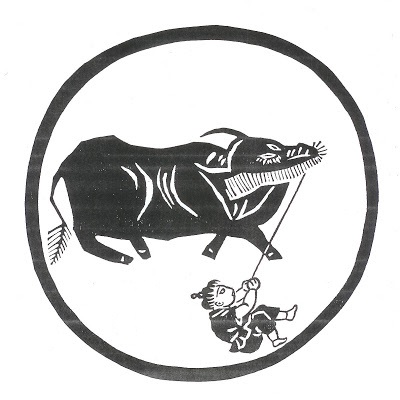
1.
Des que l'on commence à s'informer et à avoir quelque connaissance, l'esprit de confiance
naît. Cet esprit de confiance se développe et devient le fondement de la Voie. C'est pourquoi
le buffle a un point blanc sur la tête.Une pensée fondée sur la confiance,
Telle est l'origine de l'entrée sur le Chemin après mille vies.
On s'afflige d'avoir égaré la nature d'Éveil
Et d'être en maints endroits terni par la poussiêre .
A chaque instant reverdissent les herbes folles,
Chaque jour refleurissent les fleurs sauvages.
Une immense nostalgie nous envahit,
Et nos vêtements s'alourdissent de larmes.
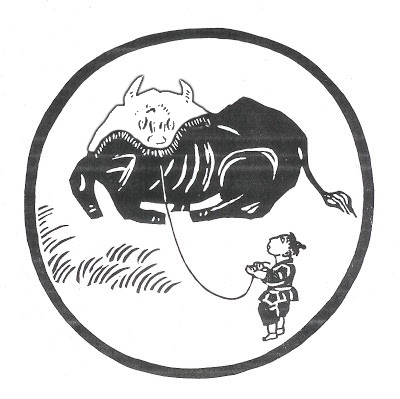
2.
L'Esprit de confiance s'est développé. Chaque pensée a été nettoyée et l'esprit soudain
brille de sa lumière. On en conçoit une grande joie. C'est le début de l'entrée [dans la
Voie]. C'est pourquoi la tête [du buffle] est entièrement blanche.J'interroge et enquête sur ce buffle,
Je me suis trompé, mais n'est-il pas déjà trop tard?
J'ai quitté le logis depuis plusieurs kalpa,
Tant de fois entraîné par les pensées irréelles.
Chaque pensée retourne à la Non-Pensée,
À chaque réflexion est éliminé l'objet des réflexions.
C'est à partir de là qu'on entre dans la Voie,
Pour réaliser graduellement le Non-Agir.
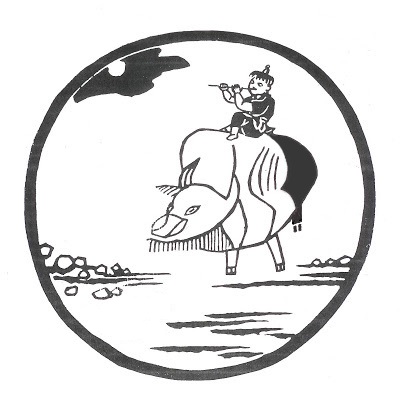
3.
Le cœur brille de sa lumière, les imprégnations de l'ignorance s'effacent peu à peu.
La sagesse intuitive (prajñâ) purifiée et rendue lumineuse n'est cependant pas encore tout
à fait pure. C'est pourquoi le buffle n'est quà moitié blanc.Combien de printemps et d'automnes passés à le dresser
Pour que le buffle repose sur le champ de rosée,
Détaché des herbes parfumées,
Et flânant près de l'Himalaya.
Bien que les pensées justes retournent à l'Un,
Les pensées erronées continuent de sécouler pêle-mêle.
Soudain, toute empreinte du cœur a disparu,
L'homme n'est plus soumis aux six destinées.
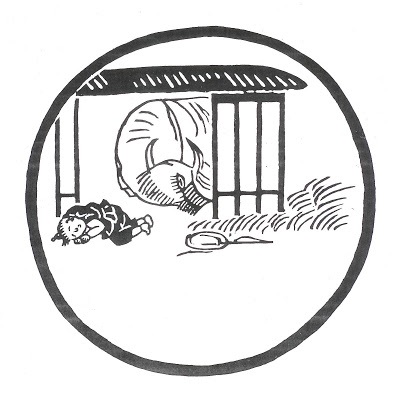
4.
Il n'y a plus de pensées irréelles. Seul subsiste le cœur véritable et purifié, illuminant
intensément le corps entier.L'homme n'est plus soumis aux six destinées.
L'arbre Udumbara fleurit dans le feu,
Toute attache a complètement disparu.
Pureté et lumière ont éliminé la poussière,
Corde et lien ne sont plus d'aucune utilité.
Que sont devenus l'homme et le buffle?
S'ébattant dans la Vacuité au-delà du temps,
Même l'éveillé ne sait pas où ils sont.
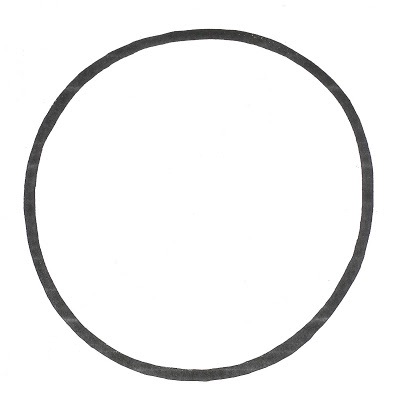
5.
Cœur et choses sont oubliés. Homme et buffle ont disparu, ayant à jamais transcendé
les phénomènes extérieurs. Seule subsiste la Vacuité-Vacuité. Cet état s'appelle Porte de la
délivrance et Artère de vie des anciens éveillés.Homme et buffle ont disparu,
Les amis intimes ne fréquentent plus l'ancien chemin.
La brume s'enroule autour des milliers de pics paisibles,
La mousse tapisse les trois sentiers profonds.
Le Cœur est vacuité et ne contient plus rien,
Les passions sont éliminées et inexistantes.
Où se trouve le vieillard qui tenait le crochet ?
Le ruisseau Pan est recouvert d'une végétation luxuriante.
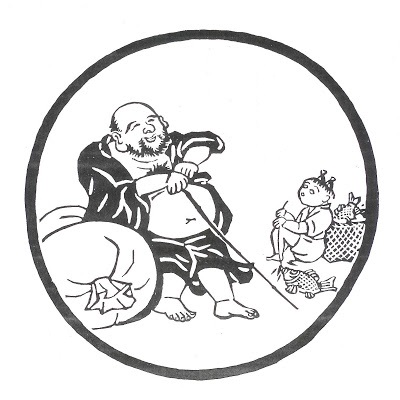
6 .
La racine de vie ayant été coupée et éliminée, il y a retour dans la vie; chacun selon
ses caractéristiques reçoit un corps diffirent et joue son rôle sur cette scène de théâtre. Seul
a été transformé l'homme d'autrefois, l'endroit où il marchait n'a pas changé.Au bout de ces merveilles, de nouveau i l y a un chemin,
Et il retourne parmi les six destinées.
Toutes choses de ce monde sont affaires de Bouddha,
En tous lieux se trouvent les coutumes de chez soi.
Il est telle jade éclatant qui scintille dans la boue,
Ou l'or fin qui brille dans le feu.
Sur la route sans fin, il se promène, satisfait,
Et s'adapte aux circonstances, léger et détaché.